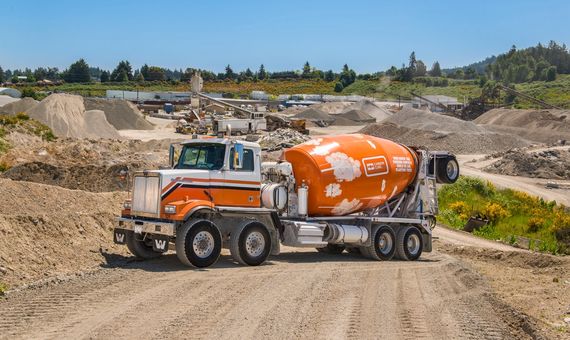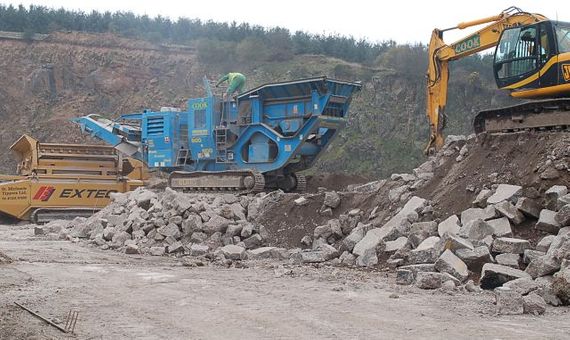If you ask people what the second most consumed material in the world is after water, most will likely draw a blank. And yet, unless you are standing in the middle of a natural setting, you only have to look in almost any direction to find it: three tonnes of concrete per year is used for every person on the planet, which is twice that of all other building materials combined. And while it seems clear that in the future concrete will continue to be the basic resource it has been since it was invented in its modern form in the 19th century, today we have a problem: cement, the glue that binds the components of concrete together, is responsible for 8% of global emissions of CO2, the main greenhouse gas provoking climate change. This is why both research and industry are exploring ways to reduce these emissions or to find substitute materials. Here are some of the proposals.
Carbonising cement to decarbonise it
Although the bulk of CO2 emissions generally come from burning fossil fuels, in the case of the cement industry this only accounts for 50% of the carbon emitted; the other half cannot be eliminated either by improving efficiency or by substituting energy sources, as it is inherent in the chemical reaction that gives rise to the main ingredient in cement: the calcination of limestone, or calcium carbonate (CaCO3), results in lime (calcium oxide, CaO) and CO2. It is thus impossible to manufacture cement without producing CO2. Therefore, apart from reducing the amount of CO2 in concrete mixes, proposals to decarbonise cement production focus on capturing CO2 so that it is not released into the atmosphere.

There are a variety of proposals for carbon capture and storage, ranging from burying CO2 to using it as a raw material in the manufacture of materials. However, these technologies are still in experimental or pilot project phases, and some experts are sceptical. One cement-specific process involves using CO2 as a curing agent, so that the carbon is trapped in a solid state, mineralised in the form of calcium carbonate. The cement thus becomes a carbon sink that can even improve the properties of the resulting concrete.
Recycling of materials
Recycling is also an essential way to reduce the consumption of cement. Traditionally, demolition debris is dumped in landfills, but increasingly it is being reused. Construction rubble can be broken down and crushed to different sizes, allowing it to be used as building blocks, in breakwaters or retaining walls, as gravel for roads and landscaping, or as aggregate for making new concrete. In the EU there has been a directive in place since 2008 that called on countries to recycle 70% of construction and demolition waste by 2020. Although most member states still only recycle 50%, in some EU countries the rate is already as high as 90%.

Concrete is not the only source of recycled building materials. Stainless steel, a building material often considered an example of sustainability because of its durability and because it is 100% recyclable without loss of properties, especially stands out. Although it is still only 85% reused, it is the most recycled industrial material in the world. The drawback of the iron and steel industry is its CO2 emissions, which account for 6.7% of the global total, but as with cement, work is currently underway to reduce them.
Another interesting possibility in the area of recycling concerns a ubiquitous material in our civilisation that often ends up in the rubbish bin: plastic. Using it in construction is one way of giving it a definitive use. Many researchers are working on the manufacture of building elements from plastics, such as paving, bricks, roofing and beams. According to Sibele Cestari of Queen’s University Belfast, the properties of plastic waste make it the perfect building material: mouldable, lightweight, strong, durable, waterproof and recyclable.
Innovative materials
The search is on for new materials that can replace cement as a basic ingredient in construction. They need to work as binding agents and also set at room temperature without the use of calcium carbonate and without CO2 emissions. Since the 1970s, cements based on geopolymers have been the main choice. They are made from aluminosilicates, which in the presence of an alkaline agent and water react to form a gel that sets even faster than conventional cement; in fact, their rapid curing can be a drawback. Metakaolin—a derivative of the clay mineral kaolinite—or fly ash are used as raw materials, and even industrial by-products such as slag can also be added to cement. Several companies produce these cements, which reduce emissions compared to conventional cements by 80-90%, but their applications are as yet limited, and there is still a lack of standards to facilitate more widespread use.

Research into innovative new materials that can replace or reduce the use of cement is focusing on options such as biocements that grow in a similar way to coral thanks to the action of microorganisms; carbon concretes that use plant fibres to reduce the use of cement—the first building made of this material is being developed in Germany; bricks made from cigarette butts, and other varied proposals. However, all of these are likely to be of very limited use. In this field, one curiosity that stands out is transparent wood, which is obtained by means of certain chemical treatments. Although it won’t replace cement, it offers the possibility of manufacturing windows with greater insulating power than glass.
A return to the traditional
Finally, given that it is not easy to develop new innovative materials for large-scale use at a price comparable to that of concrete, the construction industry is turning to traditional materials that are currently used much less, but which experts place at the top of the list of the most sustainable. A 2019 survey of more than 500 architects, engineers and construction professionals revealed that bamboo is considered the fastest growing sustainable material. Timber and cork also tend to feature among sustainable building preferences, along with rammed earth, a technique that has been used around the world for thousands of years, including in the Great Wall of China.

These traditional materials are also the subject of innovation. Timbercrete, created in Australia, combines concrete with wood sawdust. Cross-Laminated Timber (CLT) was developed in the 1990s and is now even used for high-rise buildings; an 80-storey wooden skyscraper has been proposed in Chicago. As for bamboo, traditionally used in Asia, its excellent mechanical properties and rapid growth—making it more renewable than wood— have boosted its popularity. Its modular use offers great versatility for building structures, which is why many experts consider it to be the eco-sustainable construction material of the future. Among the most notable projects using this material is the roof of Terminal 4 of the Madrid-Barajas airport.
Comments on this publication